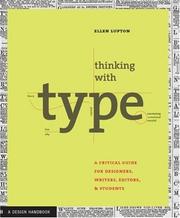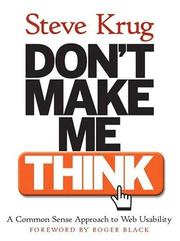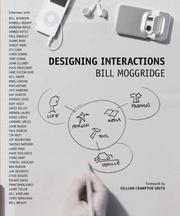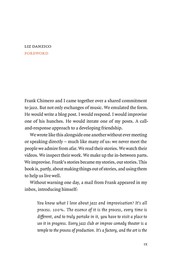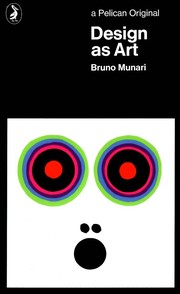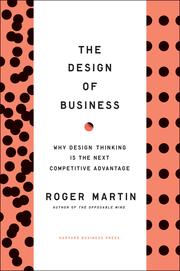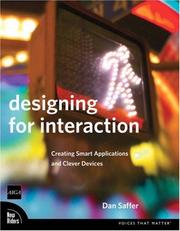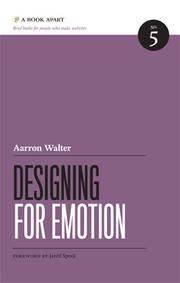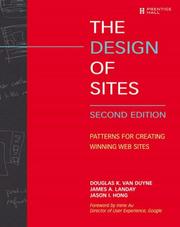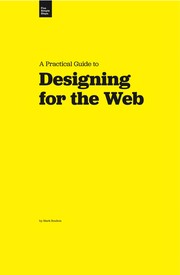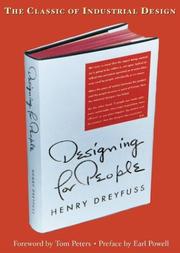Are you a design enthusiast looking to expand your knowledge and get inspired? Look no further! We have curated a list of the 20 best books about design that are guaranteed to ignite your creativity and take your skills to the next level. Whether you’re a graphic designer, architect, or simply someone fascinated by the world of design, these books will provide invaluable insights, tips, and inspiration. From timeless classics to modern masterpieces, these design books are a must-read for anyone passionate about the art of design.
Contents
- 1 The Design of Everyday Things
- 2 Thinking with Type
- 3 Don’t Make Me Think
- 4 The Elements of Typographic Style
- 5 Universal Principles of Design
- 6 Designing Brand Identity
- 7 The Non-Designer’s Design Book
- 8 Designing Interactions
- 9 The Shape of Design
- 10 Design as Art
- 11 The Design of Business
- 12 Designing for Interaction
- 13 The Design of Future Things
- 14 The Design of Everyday Things: Revised and Expanded Edition
- 15 Designing for Emotion
- 16 The Design of Sites
- 17 Designing for the Digital Age
- 18 Designing for the Social Web
- 19 Designing for the Web
- 20 Designing for People
- 21 Conclusion
The Design of Everyday Things
by Don Norman
“The Design of Everyday Things” is a captivating book about the intricacies of everyday design. Written by Don Norman, a renowned cognitive scientist and usability engineer, this book delves into the fascinating world of human-centered design, shedding light on how the things we interact with on a daily basis are crafted.
More than just a design book, “The Design of Everyday Things” takes readers on a journey through the art of making things usable and intuitive. Norman explores the psychology behind human behavior and how it influences the way we interact with objects, from door handles to smartphones.
With a focus on user experience, this book highlights the importance of good design and the impact it has on our daily lives. Norman’s insights and anecdotes make the subject matter accessible and engaging, ensuring that readers from all backgrounds can appreciate the importance of thoughtful design.
Whether you’re a designer, engineer, or simply someone curious about the objects that surround you, “The Design of Everyday Things” is a must-read. Prepare to see the world through a new lens as Norman guides you through the intricacies of the design process and the hidden factors that shape our interactions with the world around us.
Thinking with Type
by Ellen Lupton
Thinking with Type is a captivating book on design that will make you fall head over heels for the world of typography. Ellen Lupton, a renowned graphic designer, takes you on an exhilarating journey through the intricate art of arranging type to create visually stunning compositions.
In this remarkable book about design, Lupton explores the principles and techniques of typography, shedding light on how typefaces can convey meaning and evoke emotions. With her expert guidance, you’ll delve into the fascinating history of typography, discover the secrets behind effective layout design, and learn how to make typography your most powerful ally in visual communication.
Whether you’re an aspiring designer, a curious language enthusiast, or simply someone who appreciates the beauty of well-crafted words, this design book will leave you inspired and eager to experiment with your own typographic creations. So, grab a cup of coffee, cozy up in your favorite reading nook, and prepare to embark on a mesmerizing typographic adventure with Ellen Lupton as your guide.
Don’t Make Me Think
by Steve Krug
A User-Friendly Guide: Don’t Make Me Think
Looking for a book on design that will revolutionize the way you think about creating user-friendly websites? Well, look no further! Don’t Make Me Think by Steve Krug is the ultimate guide to understanding the principles of web usability and crafting intuitive designs that will leave your users begging for more.
This captivating book about design takes a refreshing approach, as it focuses on the idea that a successful website should be so effortless to navigate that users don’t have to think twice. Krug’s mantra is simple: if a webpage makes users stop and think, it has failed.
With a delightful blend of wit, humor, and practical advice, Krug walks you through the essential concepts of web usability, teaching you how to create designs that are self-explanatory, intuitive, and enjoyable. This design book will inspire you to approach your projects with empathy, putting yourself in the shoes of your users and understanding their needs and expectations.
Whether you’re a seasoned designer or just starting your journey in the world of web development, this book on design is a must-read. Krug’s timeless insights will equip you with the tools and knowledge to create websites that not only look stunning but also provide an exceptional user experience.
So, if you’re ready to make your mark in the world of design, grab a copy of Don’t Make Me Think and embark on a journey that will forever change the way you approach web usability. Get ready to design with confidence, knowing that your creations will effortlessly guide users through a seamless digital experience.
The Elements of Typographic Style
by Robert Bringhurst
The Elements of Typographic Style by Robert Bringhurst is a masterful book on the art of typography. More than just a design book, it is a captivating exploration of the intricate relationship between words, letters, and the spaces in between.
Universal Principles of Design
by William Lidwell, Kritina Holden, Jill Butler
Are you ready to dive into the fascinating world of design? Look no further than the captivating pages of Universal Principles of Design, a remarkable book on design that will leave you inspired and enlightened.
This extraordinary masterpiece, also known as a book about design, is a treasure trove of knowledge, offering a comprehensive exploration of the fundamental principles that underpin successful design in various fields.
Whether you are an aspiring designer, a seasoned professional, or simply someone with a keen interest in the world of aesthetics, this design book will captivate your imagination and expand your understanding of what makes good design truly exceptional.
From typography and color theory to usability and user experience, the authors William Lidwell, Kritina Holden, and Jill Butler have meticulously compiled a collection of timeless principles that can be applied to any design discipline.
Prepare to be immersed in a world of creativity as you uncover the secrets behind the harmonious arrangement of elements, the power of simplicity, and the psychology of visual perception.
With each turn of the page, you will be introduced to a new principle, accompanied by stunning examples and thought-provoking insights that will reshape the way you approach design challenges.
So, if you are ready to embark on a journey of discovery and unlock the secrets of exceptional design, Universal Principles of Design is the perfect companion. Get ready to be inspired, educated, and transformed by this remarkable book on design.
Designing Brand Identity
by Alina Wheeler
Designing Brand Identity: A Comprehensive Guide to Creating Brands That Last
Looking for a captivating and informative book on design that will take you on a journey through the intricate world of branding? Look no further than Alina Wheeler’s masterpiece, Designing Brand Identity: A Comprehensive Guide to Creating Brands That Last.
This extraordinary book about design serves as a compass, guiding readers through the complex process of creating and nurturing a brand identity that stands the test of time. Wheeler’s expertise shines through in every chapter, providing valuable insights, practical tips, and inspiring case studies to help you navigate the ever-evolving landscape of brand design.
Wheeler’s approach is thoughtful and thorough, making this design book an indispensable resource for both seasoned professionals and aspiring designers. From defining brand strategy to crafting compelling visual elements, every aspect of the branding process is covered in meticulous detail.
Throughout the pages, Wheeler demonstrates the power of storytelling in brand design, emphasizing the importance of creating authentic connections with consumers. Her words are backed by stunning visuals, making this book a feast for the eyes as well as the mind.
Whether you’re a graphic designer, marketer, entrepreneur, or simply someone with a passion for the art of branding, Designing Brand Identity will captivate and inspire you. With its extensive knowledge, engaging writing style, and a wealth of real-world examples, this book is an invaluable companion on your journey to creating brands that leave a lasting impression.
The Non-Designer’s Design Book
by Robin Williams
The Non-Designer’s Design Book by Robin Williams is a captivating and insightful exploration of the world of graphic design. This fascinating book delves into the principles and techniques behind creating visually appealing and effective designs, making it a must-read for anyone looking to enhance their design skills.
Whether you are a beginner or a seasoned designer, this book offers a wealth of knowledge and practical tips that can help you improve your design aesthetic. Williams breaks down complex design concepts into simple and easy-to-understand terms, making it accessible to readers of all levels.
With its engaging writing style and colorful illustrations, The Non-Designer’s Design Book takes readers on a journey through the fundamental elements of design, such as proximity, alignment, repetition, and contrast. By exploring these core principles, Williams provides readers with the tools they need to create visually compelling designs that effectively communicate their intended message.
This book is not just a book about design; it is a guide that empowers readers to become better designers. Williams emphasizes the importance of understanding the target audience and tailoring designs to meet their needs. She also discusses the significance of typography, color, and layout in creating impactful designs.
Whether you are a graphic designer, marketer, or simply someone interested in the world of design, The Non-Designer’s Design Book is a valuable resource that will inspire and educate. So grab a copy and get ready to unlock your creative potential and take your designs to the next level!
Designing Interactions
by Bill Moggridge
Designing Interactions is a captivating book on design written by Bill Moggridge, a renowned designer and co-founder of IDEO, a global design and innovation firm. This exceptional book about design takes readers on a fascinating journey through the world of interactive design, exploring the evolution of technology and its impact on our daily lives.
Moggridge skillfully showcases the profound influence of design in shaping our interactions with digital devices, from the early days of the computer mouse to the rise of touchscreens and beyond. He delves into the stories behind the creation of iconic products, highlighting the collaborative efforts and insights of the designers involved.
This design book provides valuable insights into the iterative design process, demonstrating how designers experiment, learn, and adapt to create more intuitive and user-friendly interactions. Moggridge emphasizes the importance of empathizing with users, understanding their needs, and designing experiences that seamlessly integrate into their lives.
Through an array of captivating anecdotes and interviews with influential figures in the design field, Designing Interactions offers a comprehensive exploration of the multidisciplinary nature of design. Moggridge’s engaging narrative draws readers in, making complex concepts accessible and inspiring them to reimagine the future of design.
The Shape of Design
by Frank Chimero
The Shape of Design is a captivating book about design that delves into the very essence of creativity and inspiration. Written by the talented Frank Chimero, this extraordinary book on design takes readers on a thought-provoking journey through the labyrinth of ideas, aesthetics, and the human experience.
Design as Art
by Bruno Munari
‘Design as Art’ by Bruno Munari is a captivating book that explores the intersection of creativity and functionality. Often referred to as a ‘book on design’, it goes beyond the conventional notions of aesthetics and dives deep into the essence of design as a holistic experience.
But let’s not limit this masterpiece to being just another ‘book about design’. Munari’s unique perspective allows us to see design in a refreshing light. He sees design as a symphony of shapes, colors, and textures that should not only be visually appealing but also serve a purpose. It’s about creating objects and spaces that not only look good but also enhance our lives in some way.
So, what sets this ‘design book’ apart from the rest? Munari’s writing style is as captivating as his ideas. He seamlessly blends theory with practical examples, making the concepts come alive. From discussing the beauty of a well-designed chair to exploring the elegance of typography, he covers a wide range of subjects, leaving no stone unturned.
Moreover, Munari’s passion for experimentation shines through in every page. He encourages readers to think outside the box, push boundaries, and challenge the status quo. His approach to design is both intellectual and playful, inspiring designers and artists alike to embrace their creativity and explore new possibilities.
In a world where design is often seen as a mere accessory or an afterthought, ‘Design as Art’ reminds us that design is an integral part of our everyday lives. It prompts us to appreciate the beauty and functionality of the objects and spaces that surround us, and encourages us to strive for excellence in our own creative endeavors.
So, whether you’re a designer, an artist, or simply someone who appreciates the power of thoughtful design, ‘Design as Art’ is a must-read. It will challenge your perceptions, broaden your horizons, and ignite your passion for all things creative.
The Design of Business
by Roger Martin
Looking for a thought-provoking and transformative book on design? Look no further than “The Design of Business” by Roger Martin. This insightful and captivating book about design explores the intersection of creativity, strategy, and innovation in the business world.
Through a series of compelling case studies and real-world examples, Martin challenges conventional notions of design and offers a fresh perspective on how it can shape and drive business success. He argues that design is not just about aesthetics or products; it is a mindset and a way of thinking that can be applied to every aspect of a company’s operations.
With his engaging storytelling and clear, concise writing style, Martin takes readers on a journey to discover the power of design thinking. He encourages leaders to embrace ambiguity, embrace experimentation, and embrace the power of empathy to create truly innovative and customer-centric solutions.
Whether you’re an entrepreneur, a business executive, or simply someone interested in the transformative potential of design, “The Design of Business” is a must-read. Martin’s thought-provoking insights and practical advice will inspire you to reimagine the way you approach problem-solving and decision-making in your own professional and personal life.
So, if you’re ready to dive into a captivating and eye-opening design book, grab a copy of “The Design of Business” and prepare to be inspired.
Designing for Interaction
by Dan Saffer
A Book on Design: Designing for Interaction by Dan Saffer
Are you passionate about the art of creation? Do you find yourself fascinated by the process of designing and crafting innovative solutions? If so, then Designing for Interaction by Dan Saffer is a must-read for you. This captivating book about design delves deep into the world of interaction design, presenting a comprehensive guide to understanding and mastering this dynamic field.
Designing for Interaction introduces readers to the fundamental principles and concepts that underpin successful interactive design. Saffer’s expertise shines through as he explores the intricate relationship between people, products, and technology. Through practical examples and real-world case studies, he demonstrates how designers can create intuitive, engaging, and user-friendly experiences that leave a lasting impact.
With its thought-provoking insights and thoughtfully crafted exercises, this design book offers a roadmap for designers to navigate the complex landscape of interaction design. Saffer’s writing style is approachable and engaging, making it an enjoyable read for both seasoned professionals and aspiring designers alike.
By reading Designing for Interaction, you will not only gain a deeper understanding of the design process but also learn how to think critically and strategically about your own design decisions. Saffer’s emphasis on user-centered design empowers designers to create products that truly meet the needs and desires of their intended audience.
So, whether you are an experienced designer looking to broaden your skillset or a newcomer to the world of design seeking guidance, Designing for Interaction is the perfect companion on your journey. Embrace the power of interaction design and unlock the potential to transform the way people interact with technology and the world around them.
The Design of Future Things
by Don Norman
The Design of Future Things by Don Norman is a captivating book on the art of innovation and creation. This thought-provoking masterpiece explores the realm of human-centered design, providing profound insights into the future of technology and how it intertwines with our daily lives. As a leading authority in the field, Norman delves deep into the intricacies of design, examining the impact it has on society and the challenges faced by designers in this ever-evolving world. Whether you’re a seasoned designer or simply fascinated by the wonders of technology, this exceptional book about design will undoubtedly leave you inspired and eager to shape the future with your own creative endeavors.
The Design of Everyday Things: Revised and Expanded Edition
by Don Norman
Welcome to the fascinating world of The Design of Everyday Things: Revised and Expanded Edition by Don Norman. This captivating book about design takes you on a journey to explore the intricate art of human-centered design.
Prepare to be captivated by Norman’s deep dive into the world of design. This book on design is a treasure trove of insights and revelations that will change the way you perceive the objects and systems that surround you daily.
Don Norman, a renowned expert in design and usability, delves into the psychology behind our interactions with everyday objects, shedding light on the importance of intuitive and user-friendly design. Through captivating anecdotes and real-life examples, Norman uncovers the hidden principles that make a design truly exceptional.
Discover the secrets behind the design of products you use every day, from smartphones to kitchen appliances. Norman’s engaging writing style and eye-opening examples will leave you with a newfound appreciation for the power of good design.
Unleash your creativity and learn how to apply the principles of human-centered design to your own projects. This design book is a must-read for anyone interested in the art of creating user-friendly and aesthetically pleasing designs.
So, if you’re ready to embark on a captivating journey into the world of design, grab a copy of The Design of Everyday Things: Revised and Expanded Edition. Get ready to see the world through the eyes of a designer and unlock a whole new level of understanding and appreciation for the objects that shape our daily lives.
Designing for Emotion
by Aarron Walter
‘Designing for Emotion’ by Aarron Walter is a captivating book about the art and science of crafting designs that evoke powerful emotions. This insightful read delves into the psychology behind user experiences and explores how to create interfaces that connect with people on a deeper level.
More than just a typical ‘design book’, ‘Designing for Emotion’ takes a holistic approach to the creative process by emphasizing the importance of empathy and understanding human emotions. By using synonyms for design, Walter encourages readers to think beyond aesthetics and focus on the impact their designs can have on users.
Through relatable examples and practical advice, this book explores how different design elements, such as color, typography, and layout, can evoke specific emotions and influence user behavior. By learning to harness the power of emotion, designers can create memorable experiences that resonate with their audience long after they interact with the design.
‘Designing for Emotion’ is a must-read for anyone passionate about creating meaningful and impactful designs. It offers valuable insights into the emotional side of design, allowing designers to connect with users on a deeper level and create experiences that leave a lasting impression.
The Design of Sites
by Douglas K. van Duyne, James A. Landay, Jason I. Hong
The Design of Sites is an exceptional book about the art and science of crafting beautiful and user-friendly websites. This captivating design book, written by Douglas K. van Duyne, James A. Landay, and Jason I. Hong, dives deep into the realm of web design, offering a wealth of knowledge and insights to aspiring designers and experienced professionals alike.
Within these pages, the authors eloquently discuss the intricacies of creating aesthetically pleasing websites that not only catch the eye but also provide a seamless user experience. They explore various design principles, such as layout, typography, color theory, and visual hierarchy, delving into the psychology behind what makes certain designs more appealing and effective than others.
The Design of Sites goes beyond mere aesthetics, emphasizing the importance of usability and accessibility in web design. The authors highlight the significance of user-centered design, providing practical advice and techniques for conducting user research, creating personas, and performing usability tests. They emphasize the need for websites to be intuitive, efficient, and enjoyable for users of all backgrounds and abilities.
Furthermore, this book on design not only focuses on the visual aspects but also delves into the technical aspects of web design. The authors discuss topics such as information architecture, navigation systems, responsive design, and performance optimization. By addressing these technical aspects, they ensure that the websites created are not only visually stunning but also function flawlessly across various devices and platforms.
The Design of Sites is a comprehensive and inspiring guide that equips readers with the tools and knowledge to create exceptional websites. Whether you are a seasoned designer looking to enhance your skills or a beginner taking your first steps into the world of web design, this captivating design book is an invaluable resource that will undoubtedly elevate your understanding and proficiency in this ever-evolving field.
Designing for the Digital Age
by Kim Goodwin
Designing for the Digital Age, written by Kim Goodwin, is a captivating book about the art of crafting user-centric experiences in the digital realm. This design book delves into the intricate world of creating intuitive interfaces and engaging interactions that captivate users and leave a lasting impact.
Designing for the Social Web
by Joshua Porter
Designing for the Social Web by Joshua Porter is a captivating book about the art of crafting impactful user experiences in the digital realm. This engaging design book delves into the intricacies of creating user-centered designs that connect people and foster meaningful interactions on social platforms.
Designing for the Web
by Mark Boulton
Looking for a captivating book on design? Look no further than “Designing for the Web” by Mark Boulton. This exceptional book about design delves into the intricacies of creating beautiful and functional websites, making it a must-read for anyone interested in the world of web design.
Designing for People
by Henry Dreyfuss
Designing for People by Henry Dreyfuss is a captivating book about the art and science of creating designs that truly cater to the needs and desires of people. It is a remarkable book on design that delves deep into the intricacies of understanding human behavior, psychology, and ergonomics to create products that are not only visually appealing but also functional and user-friendly.
In this insightful book about design, Dreyfuss emphasizes the importance of empathizing with the end-users and putting their needs at the forefront of the design process. He explores how different factors, such as size, shape, color, and texture, can greatly influence the usability and desirability of a product. Dreyfuss showcases numerous case studies and real-world examples to illustrate his concepts, making the book both informative and engaging.
This design book serves as a valuable resource for designers, engineers, and anyone involved in the creation of products. Dreyfuss’s expertise and experience shine through as he shares practical tips, techniques, and principles for creating designs that resonate with people on a deeper level. Whether you are designing furniture, appliances, or even digital interfaces, this book provides a comprehensive guide to creating designs that truly connect with users.
Overall, Designing for People by Henry Dreyfuss is a must-read for anyone passionate about design. It inspires readers to think beyond aesthetics and to consider the human element in every design decision. This book will undoubtedly change the way you approach design, guiding you towards creating products that are not only visually stunning but also intuitive and enjoyable to use.
Conclusion
In conclusion, these 20 best books about design are essential reads for anyone looking to gain a deeper understanding of the principles, history, and techniques of design. Whether you’re a student, a professional designer, or simply interested in the subject, these books offer valuable insights and inspiration. From classic works to contemporary titles, there’s something for everyone in this curated list. So, dive into these books about design and expand your knowledge and creativity in the fascinating world of design.

